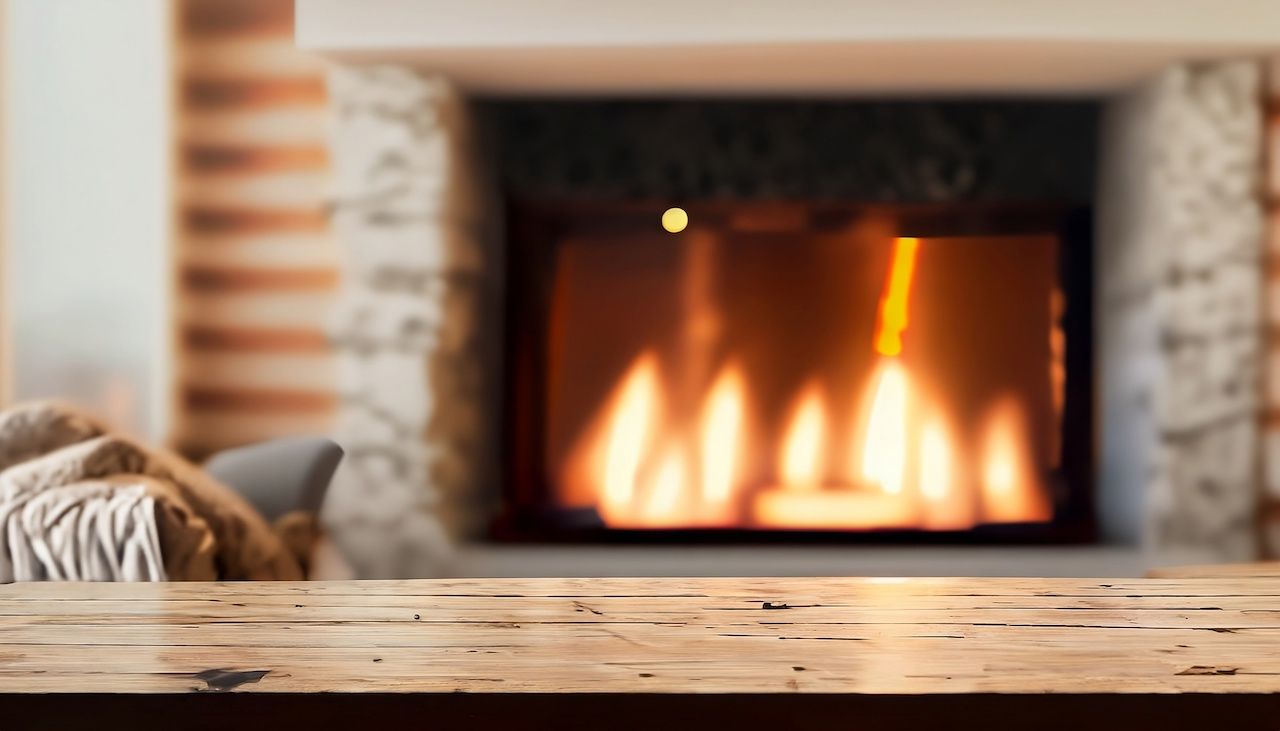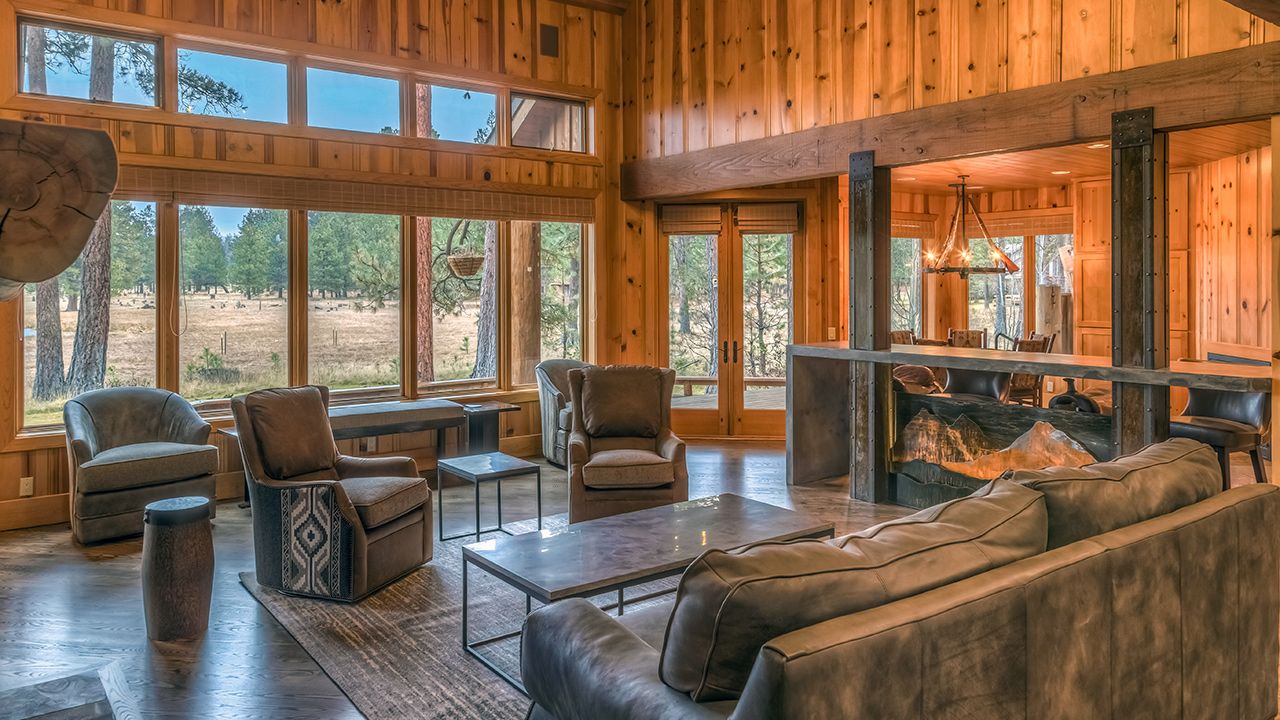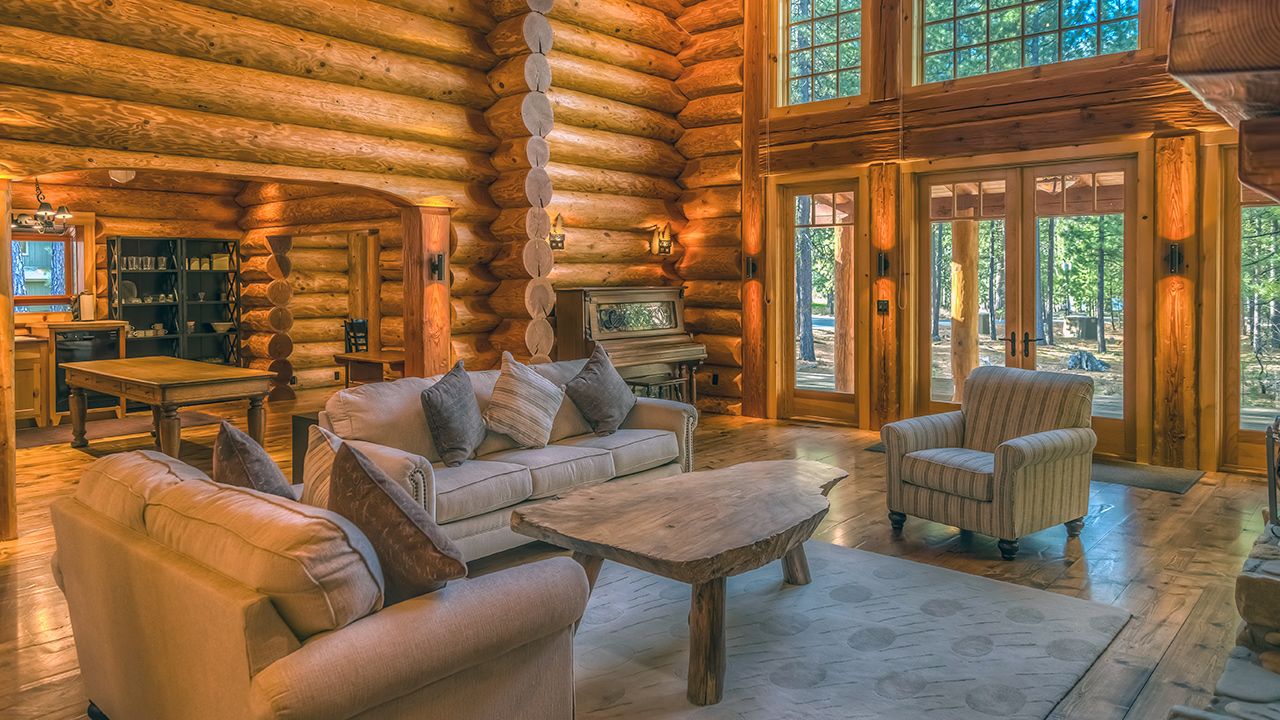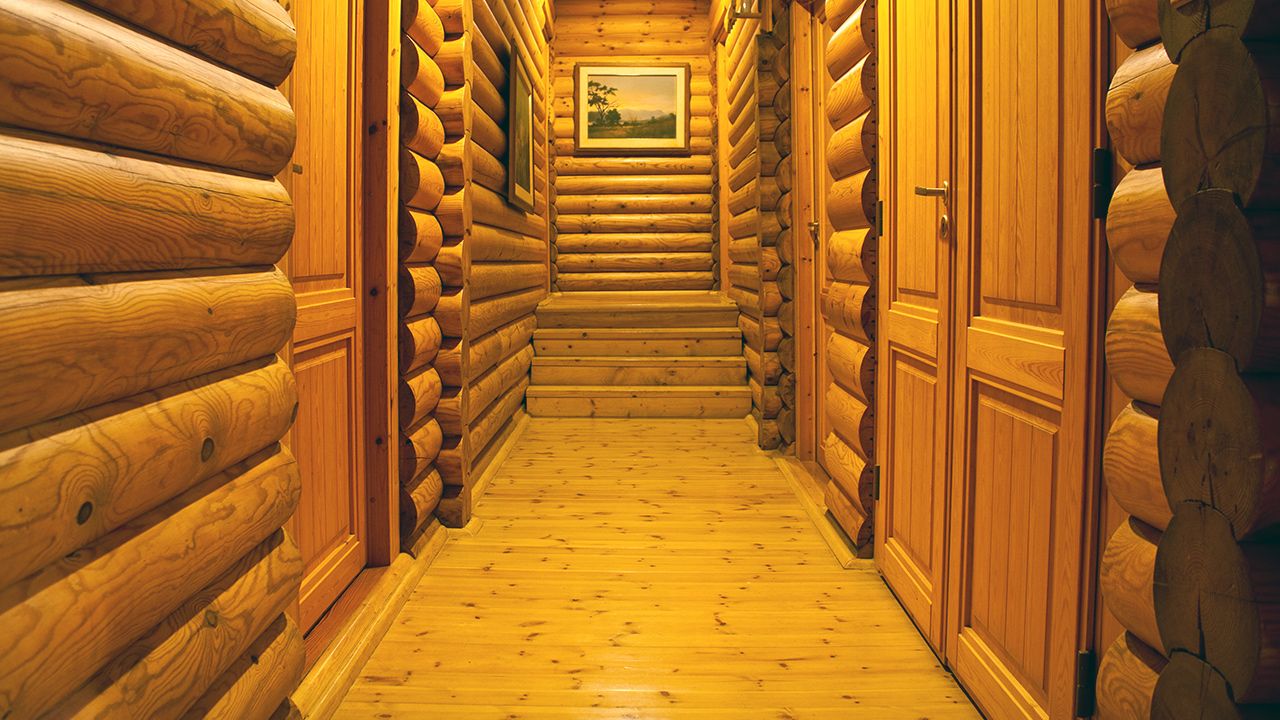Understanding the R Value of Wood in Log Homes Energy Efficiency
By HeyHome • November 1, 2023

In the construction realm, the term "R value" isn't just jargon—it's pivotal. This figure embodies the thermal resistance of materials, including wood. While the average R value for most materials might be easily overlooked, in the context of a log home, it's indispensable. The R value of wood, especially in log walls, is more than a mere statistic. It's a testament to how efficiently these walls can inhibit heat flow, ensuring the energy efficiency of the home. When considering a log home's design, understanding the role and implications of the R value isn't just recommended—it's essential.
Join our newsletter
Stay on top of the latest in landscaping and lawn care with one valuable tip right in your inbox every Saturday morning.
Unveiling the R Value of Wood: A Deep Dive
When discussing the R value of wood, it's essential to understand that not all woods are created equal. Broadly, wood ranges into two categories:
- Hardwoods: Often sourced from deciduous trees, most hardwoods generally possess a higher R value, granting them better insulation capabilities.
- Softwoods: These usually come from coniferous trees. While most softwoods tend to have a slightly lower R value compared to hardwoods, they are still widely used in log buildings due to their abundance and other structural benefits.
Another crucial consideration is the thickness and moisture content of the wood. As the wood becomes thicker, its thermal resistance—or R value—typically increases. However, a higher moisture content can diminish this value, affecting the wood's insulating properties.
Contrary to popular belief, wood is not merely an "inferior insulation system." While it might not match some synthetic insulations in R value alone, wood offers a blend of thermal resistance and aesthetic appeal that few materials can rival, especially in the context of log homes.

Log Walls: Beyond Just the R Value
While the R value plays a pivotal role in determining the insulation capabilities of materials, with log walls, there's another significant factor to consider—thermal mass. Thermal mass refers to a material's ability to store heat and gradually release it over time. This feature is especially pronounced in materials with a large mass, like logs.
Think of log walls as thermal batteries. These walls are adept at absorbing heat during the day and then releasing it slowly as the surroundings cool, helping maintain a consistent indoor temperature. This trait not only aids in energy efficiency but also ensures a comfortable living environment, especially in climates with substantial temperature swings.
The unique heat flow dynamics and energy storage capabilities of log walls allow them to regulate indoor temperatures effectively. They don't just act as barriers to external temperatures but play an active role in harmonizing the indoor climate, making log homes not only energy efficient but also cozily adaptive.

Thermal Mass: The Unsung Hero of Log Home Energy Efficiency
Thermal mass is often overshadowed by the commonly referenced R value, yet its role in energy-efficient construction is undeniable. Simply put, thermal mass denotes a material's capacity to store heat and then release it gradually, harmonizing with its surroundings. It's an attribute that depends greatly on the material's density and specific heat.
In the realm of energy efficiency, log walls are exceptional due to their substantial thermal mass. Unlike a conventional wood stud wall, a thick log wall absorbs and retains heat, acting as a buffer against substantial temperature swings. This natural heat flow regulation ensures that log homes remain cozy in cold weather and cool during sunny climates.
The significant thermal mass of log walls allows them to surpass the expectations set by their average R value alone. By leveraging this stored energy, log homes can yield considerable energy savings, proving that they are more than just aesthetically pleasing—they're energy-efficient powerhouses in their own right.
Join our newsletter
Stay ahead of the curve in all things outdoor.
Get the inside scoop on the latest landscaping, lawn care, and fencing trends with 1 actionable tip every Saturday morning.
Challenges and Solutions in Log Wall Insulation
Despite the natural energy efficiency advantages offered by log walls, they aren't without challenges. From potential gaps to clear wall areas, there can be several factors that compromise their insulation capabilities.
Addressing Gaps, Clear Wall Areas, and Energy Leaks
Log walls, over time, may exhibit gaps or separations due to wood contraction or settling. These gaps can act as conduits for heat flow, making them potential energy leaks. Clear wall areas, devoid of proper insulation, can further accentuate this problem.
The Evolution of Building Code Energy Standards for Log Buildings
With a growing emphasis on energy efficiency, building code energy standards have evolved considerably. For log buildings, these standards have been tailored to consider the unique nature of log construction, ensuring that even with their inherent challenges, they can adhere to modern energy-saving principles.

Techniques and Tips for Ensuring Optimal Thermal Resistance:
- Seal Gaps: Regular inspections and using appropriate sealants can help in addressing gaps and separations.
- Enhance Insulation: For clear wall areas, consider adding an extra layer of insulation or using high R value materials.
- Understand Wood Ranges: Recognize the R value of wood used in your home. Different woods have varied insulation properties.
- Regular Maintenance: Periodic maintenance ensures that potential energy leaks are identified and addressed in a timely manner.
- Stay Updated with Standards: With evolving log building code standards, staying updated ensures that your home remains compliant and energy-efficient.
In sum, while challenges exist, with the right knowledge and tools at disposal, it's possible to ensure that log homes offer optimal thermal resistance and continue to be a sustainable choice in modern construction.

The Future of Log Homes in an Energy-Conscious World
In today's world, energy efficiency isn't just a buzzword—it's a necessity. As we reflect on the need for sustainable and responsible living, the R value of wood and the understanding of thermal mass become integral to shaping the future of log home design and construction. By embracing these principles, builders and homeowners can ensure that log homes not only encapsulate timeless beauty but also stand as a testament to forward-thinking, energy-efficient construction. In the confluence of tradition and modernity, log homes chart a path toward a greener future.
Join our newsletter
Stay ahead of the curve in all things outdoor.
Get the inside scoop on the latest landscaping, lawn care, and fencing trends with 1 actionable tip every Saturday morning.